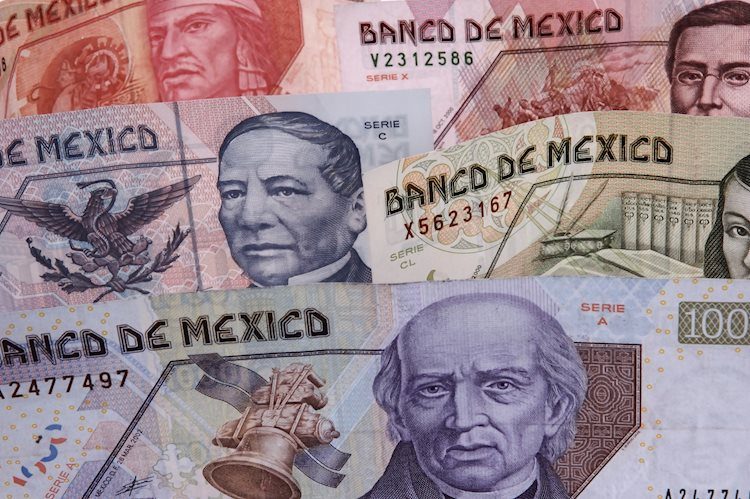The Mexican Peso (MXN) is currently trading lower in its key pairs ahead of the release of Banxico’s June meeting Minutes. Traders are hesitant to place bets due to uncertainty regarding future monetary policy in Mexico. The Peso has weakened the most against the Pound following the release of better-than-expected UK GDP data for May. At the time of writing, one US Dollar buys 17.86 Mexican Pesos, EUR/MXN trades at 19.37, and GBP/MXN at 23.00.
The Mexican Peso is experiencing mixed trading on Thursday, rising versus the US Dollar but falling against the Pound Sterling and the Euro. The decline against the Pound can be attributed to the release of strong UK GDP data for May, which exceeded economist’s estimates. Traders are cautious ahead of the release of Banxico’s meeting Minutes as uncertainty over interest rates has increased following higher-than-expected Mexican inflation data for June.
The 12-month inflation rate in June came out at 4.98%, higher than economist’s expectations and the previous reading. Banxico Deputy Governor Jonathan Heath expressed concern over the inflation data, which could impact monetary policy decisions. Core inflation, excluding volatile components, was below expectations, easing concerns slightly. Capital Economics suggests an August rate cut could be possible, negatively affecting the Peso.
In terms of technical analysis, USD/MXN is possibly falling in the wave C of an ABC correction. The short-term trend is bearish, with the potential for more downside. However, the break of support at 17.87 was not definitive, indicating a possible recovery. If USD/MXN breaks below Wednesday’s low, it could lead to a move down to the target at the 50-day Simple Moving Average at 17.60. The medium and long-term trends remain uncertain.
The Mexican Peso’s movement is closely linked to economic indicators such as core inflation. The core inflation index released by the Bank of Mexico provides insights into price movements and is used by the central bank to set interest rates. A high reading is seen as positive for the Peso, while a low reading is negative. Traders continue to monitor economic indicators and policy decisions for potential impact on the Peso’s value in key pairs.











